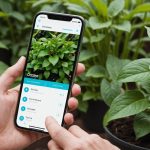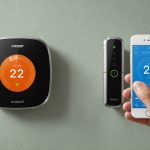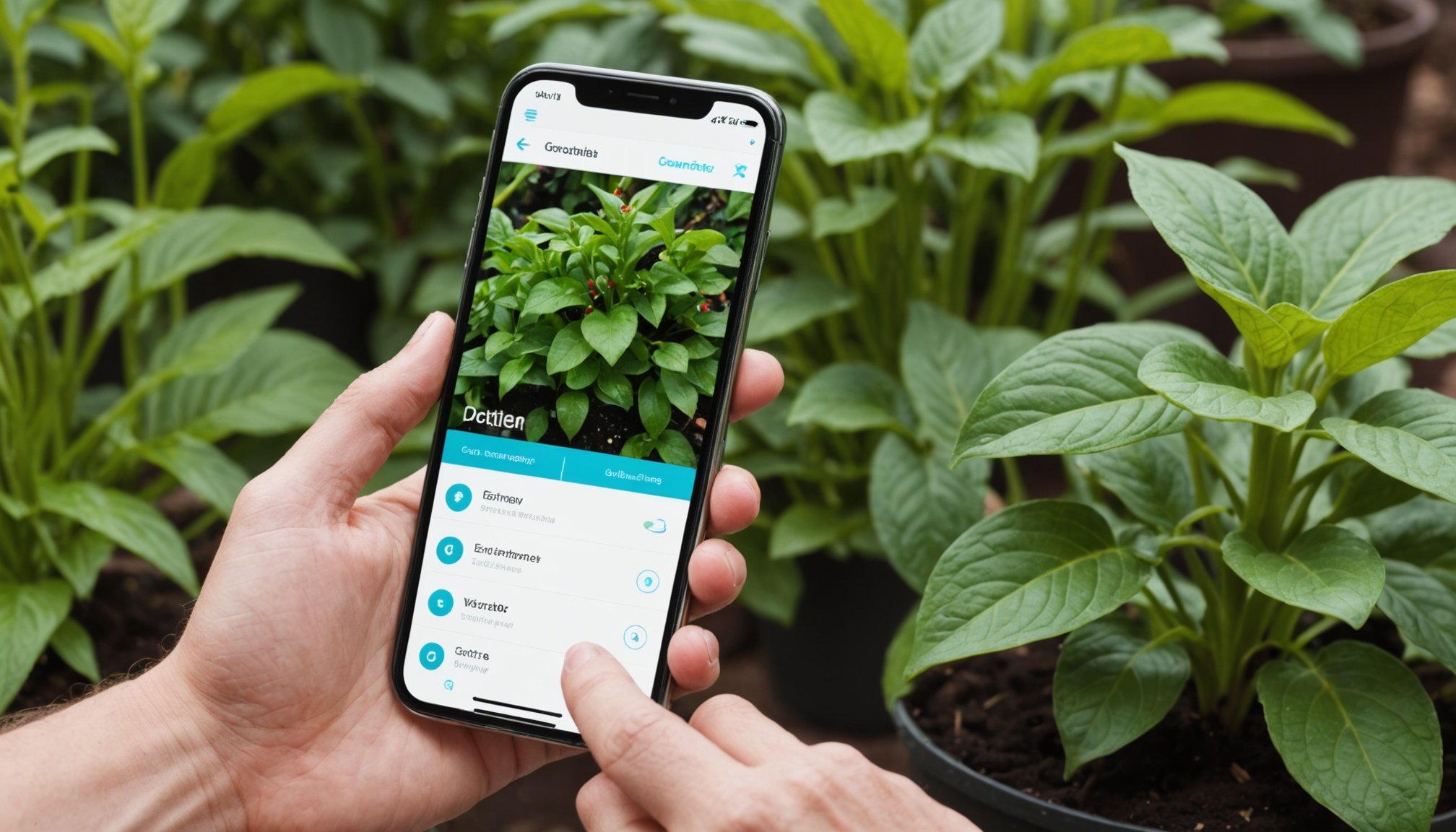Introduction to Smart Garden Technology
In the world of modern gardening, smart garden technology is revolutionising how plant enthusiasts manage their green spaces. This innovation provides gardeners with more control and insight over their gardens than ever before. The primary attraction lies in its ability to seamlessly integrate with our daily lives through smartphone gardening applications. These apps enable users to monitor and adjust garden conditions remotely, ensuring optimal growth conditions with minimal effort.
Garden control systems are at the heart of smart garden technology. These systems often include automatic watering schedules, planting reminders, and climate control adjustments, all accessible via your smartphone. Such technologies make it possible to respond quickly to the changing needs of your garden, saving both time and resources.
Also to discover : Unlock ultimate energy efficiency in your smart home: innovative smartphone tactics for savings
Emerging smart garden technologies continue to evolve, ensuring even more sophisticated solutions are on the horizon. These include advancements like drone-based plant health assessments and advanced sensor technologies. As these innovations develop, they promise to make gardening even more efficient and accessible.
For those seeking to maintain a healthy, vibrant garden with a modern twist, smart garden technology offers a promising path. It blends traditional horticultural practices with cutting-edge innovation, creating an ideal solution for tech-savvy gardeners.
Additional reading : Unlock ultimate energy savings: a guide to linking your smartphone with a smart thermostat
Setting Up Your Smart Garden
Creating a smart garden can turn your gardening tasks from mundane to magical. But what does the setup really entail?
First, gather essential tools and devices. This typically includes smart sensors, automated irrigation systems, and a central control hub. These components form the backbone of any smart garden, working together to monitor and manage the environment efficiently.
Moving on to the integration process, you’ll need to connect each device to your smartphone or designated control system. Start by downloading the appropriate applications for your smart devices. Once installed, follow the on-screen instructions to synchronise them — often, this involves connecting to your home’s Wi-Fi network and ensuring a stable internet connection.
Best practices for the initial setup can greatly enhance the garden’s efficacy. Always calibrate your sensors according to the types of plants and local climate conditions. Organise devices logically, ensuring optimal coverage and minimal interference. Regularly update both the apps and firmware of your devices to maintain smooth operation and access new features.
Adhering to these steps, you’re paving the way for a garden that practically cares for itself, leaving you more time to enjoy its beauty.
Recommended Apps for Garden Management
Garden management apps have become essential tools for today’s tech-savvy gardeners. They offer smart solutions for monitoring, maintaining, and optimising your garden with ease. Several top apps provide excellent features that make them stand out. When considering app recommendations, it’s important to focus on functionalities that truly enhance your gardening experience.
Modern smart gardening applications can control devices like intelligent sprinklers, light systems, and soil sensors. These apps often connect to your garden devices via Wi-Fi, allowing you to monitor conditions remotely. Look for features such as real-time alerts, which notify you about watering schedules or when specific plants require attention.
Moreover, some apps offer plant identification tools, giving you detailed information about different plant species. They might also include care tips tailored to each plant, which can significantly improve your gardening outcomes.
By integrating weather forecasts, these applications help in planning gardening activities, ensuring optimal growth conditions. Additionally, smart apps can track your garden’s historical data, providing powerful insights for ongoing garden management.
In summary, selecting the right garden management apps with robust features will streamline your gardening tasks, making them more enjoyable and productive.
Compatible Smart Garden Devices
Understanding how smart garden devices integrate with your existing technology can revolutionize your gardening experience. These gardening technology innovations range from automated water systems to smart soil monitors.
Types of Devices Compatible with Smartphone Control
Many smart garden devices are now designed to be compatible with smartphones, allowing for seamless control from anywhere. These include:
- Smart irrigation systems: Automate watering schedules based on weather forecasts.
- Soil sensors: Monitor moisture, temperature, and nutrient levels.
- Weather stations: Provide real-time local weather updates.
Features and Functions of Popular Devices
Each device offers unique features, making gardening easier and more efficient. Smart irrigation systems, for instance, use advanced algorithms to conserve water. Soil sensors furnish precise data on soil conditions, ensuring optimal growth environments. Meanwhile, weather stations help optimise gardening tasks by accurately predicting weather patterns.
Considerations for Purchasing New Devices
When choosing compatible devices, consider your garden’s specific needs and the compatibility with existing technology solutions. Evaluate features such as connectivity, user-friendliness, and durability. It’s also essential to determine whether the device will genuinely enhance your gardening efforts or simply complicate them. Matching the right technology to your gardening aspirations is crucial for a successful harvest.
Troubleshooting Common Issues
In the realm of troubleshooting garden technology, connectivity problems often surface as frequent challenges. If your smart garden device fails to connect, ensure that your Wi-Fi is functioning correctly and that your device is within range. Restarting both your router and your smart device can sometimes rectify this issue. Additionally, confirm that your device’s firmware is up to date, as outdated software can lead to smart garden issues.
When addressing technical problems like device errors, identify whether the problem lies within the hardware or software. For software-related errors, resetting the device to its factory settings might help. Should hardware issue arise, examine for any physical damage or signs of wear affecting performance.
Should you encounter persistent problems, seeking support from the manufacturer can provide targeted assistance. Most companies offer comprehensive resources such as online troubleshooting guides, FAQs, and customer support lines. Engaging with online forums can also connect you with others who have faced similar technical problems, offering practical solutions and insights.
By applying these strategies, you can efficiently manage and resolve most issues related to your smart garden devices, ensuring an uninterrupted, tech-enhanced gardening experience.
Benefits of Using a Smartphone for Garden Management
Utilising a smartphone for garden management can significantly enhance control and convenience in maintaining your garden. With the touch of a button, smart gardening apps enable you to monitor soil moisture levels, schedule watering times, and even manage pest control, hence boosting garden efficiency.
One of the primary benefits of smart gardening is the substantial time savings it offers. Instead of manually inspecting every plant, digital tools provide insights into your garden’s health in real-time. This level of monitoring ensures that any issues are addressed promptly, allowing you to better allocate your time and efforts.
Moreover, there are substantial environmental benefits of smart garden technology. By accurately assessing and catering to your plants’ needs, you reduce water wastage and optimise the use of resources. This precision in care not only supports a healthier garden but also contributes to broader environmental sustainability.
Through these features, smartphones bridge the gap between traditional gardening and modern technology, making them indispensable tools for both novice and seasoned gardeners. Embracing these innovations not only enhances the gardening experience but also promotes better garden efficiency and environmental stewardship.
Advanced Features and Future Trends
As smart gardening technology evolves, it incorporates remarkable innovative features that redefine how we nurture our plants. From AI-driven irrigation systems to adaptive lighting setups, these advancements cater to diverse gardening needs. Predictive weather monitoring is another advanced gardening tech feature, offering precise data to optimise plant care.
In the future, we anticipate that smartphone integrations will become increasingly sophisticated. Imagine managing a garden entirely from your phone, adjusting watering schedules and monitoring plant health remotely. This integration simplifies tasks and allows for better real-time decision-making.
Artificial Intelligence (AI) and the Internet of Things (IoT) significantly enhance smart gardening practices. AI could analyse plant health through real-time imagery, providing instant feedback. Meanwhile, IoT connects multiple devices, creating a seamless ecosystem for efficient garden management.
Incorporating these technologies means gardeners can now enjoy:
- Enhanced resource management
- Reduced environmental impact
- Personalised gardening experiences
The future of smart gardening holds promise with these ongoing innovations, making plant care more efficient and sustainable. Embracing these advancements empowers gardening enthusiasts to tailor care routines to benefit both plants and the environment, all while enjoying greater convenience and control.











